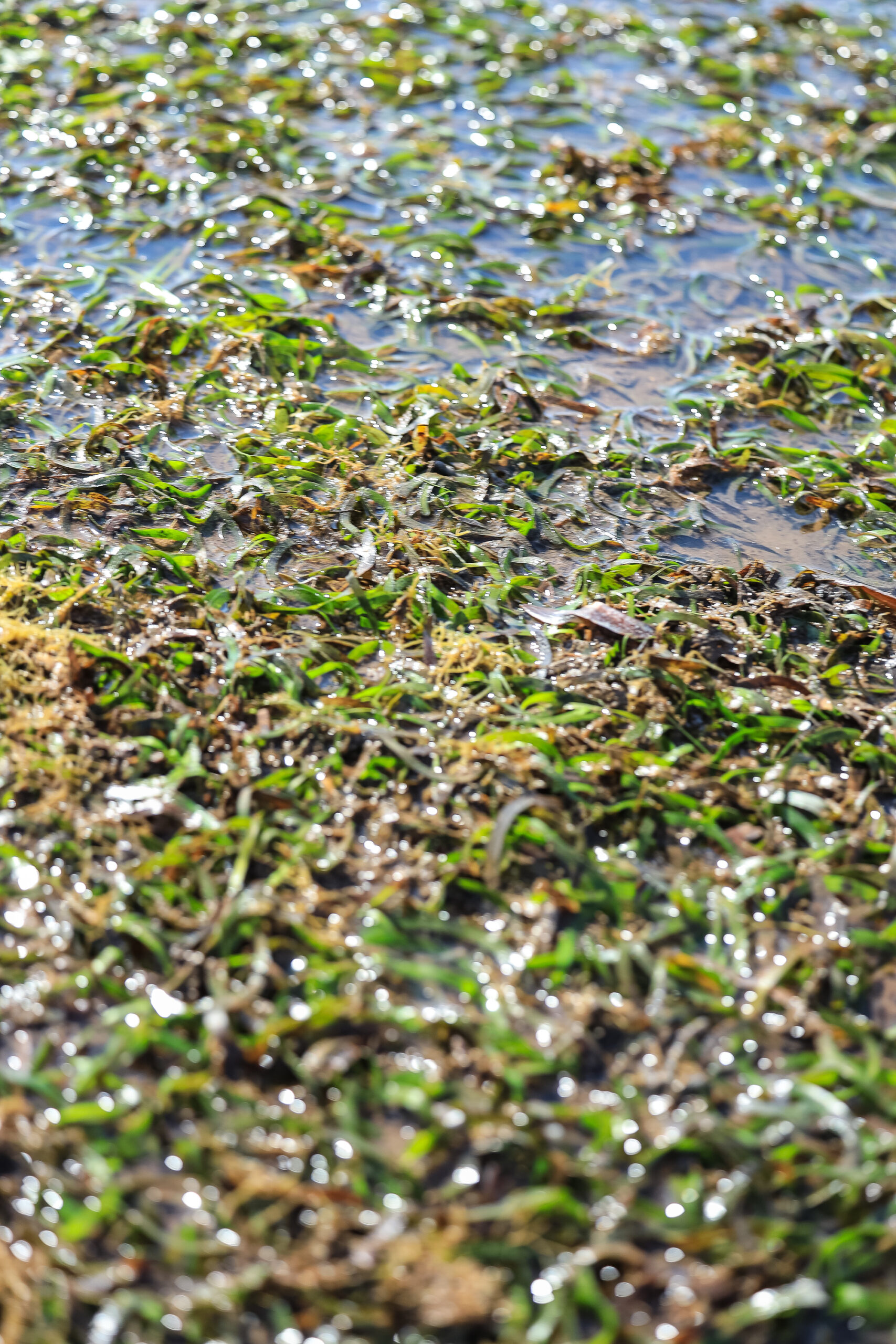Vanga Seagrass Project
Protecting vital ecosystems to benefit local communities, biodiversity and climate
Project Origins
After 4 years of successful mangrove conservation and restoration, the community of Vanga Bay is keen to protect vitally important seagrass meadows. Seagrass meadows are difficult ecosystems to certify under carbon standards. In summary, it is difficult to calculate seagrass work would not make this financially viable, unlike mangrove conservation.
Around 30% of jobs in the Vanga community are in the fisheries sector. The community recognises the importance of seagrass as a nursery habitat for small fish, boosting fish stocks and fisheries. As a result, two areas in Vanga Bay were designated for protection by the local fishers and communities of Vanga, Jimbo, Jasini and Kiwegu.
The seagrass meadows are now the focus of a pilot biodiversity project to be certified under the newly released Plan Vivo Nature Standard. This will be one of the world’s first accredited seagrass biodiversity projects and will provide a sustainable model for community-led protection of this important ecosystem.
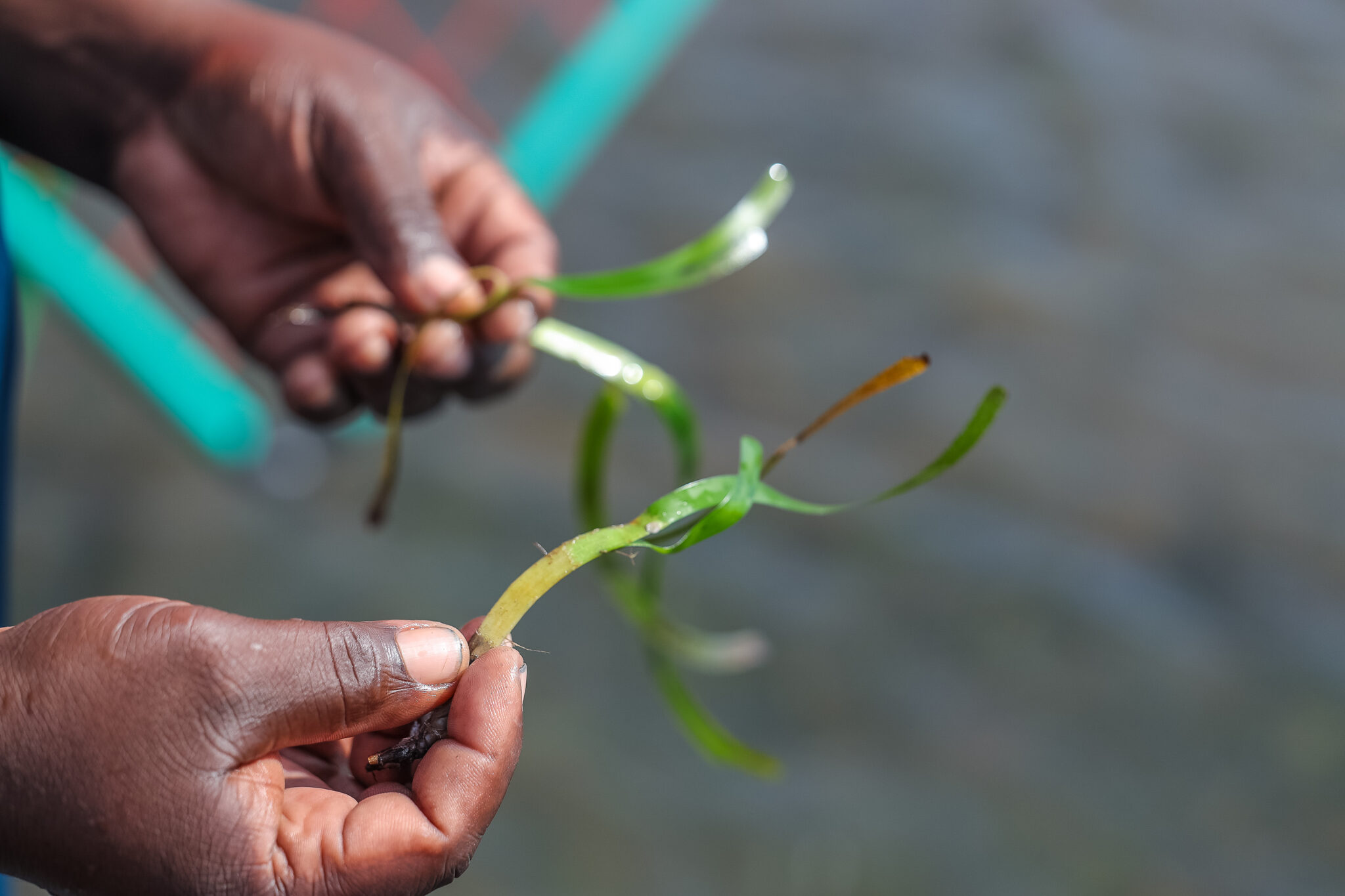
Learn more about this project
The importance of seagrass in Vanga Bay
This project aims to prevent damage and reduce pressure on the seagrass meadows of Spaki-Mwambao and Buda (Jimbo) in Vanga Bay, helping the ecosystem to continue to support the local community, biodiversity, climate action and carbon sequestration.
Vanga Bay contains around 14% of all seagrass in Kenya. Vanga Bay supports various species of culturally and commercially important fish and other marine animals, including IUCN Red List endangered species (Zostera capensis, Dugong and more).
To learn more about the global importance of seagrass, its biology and the threats it faces, click here.
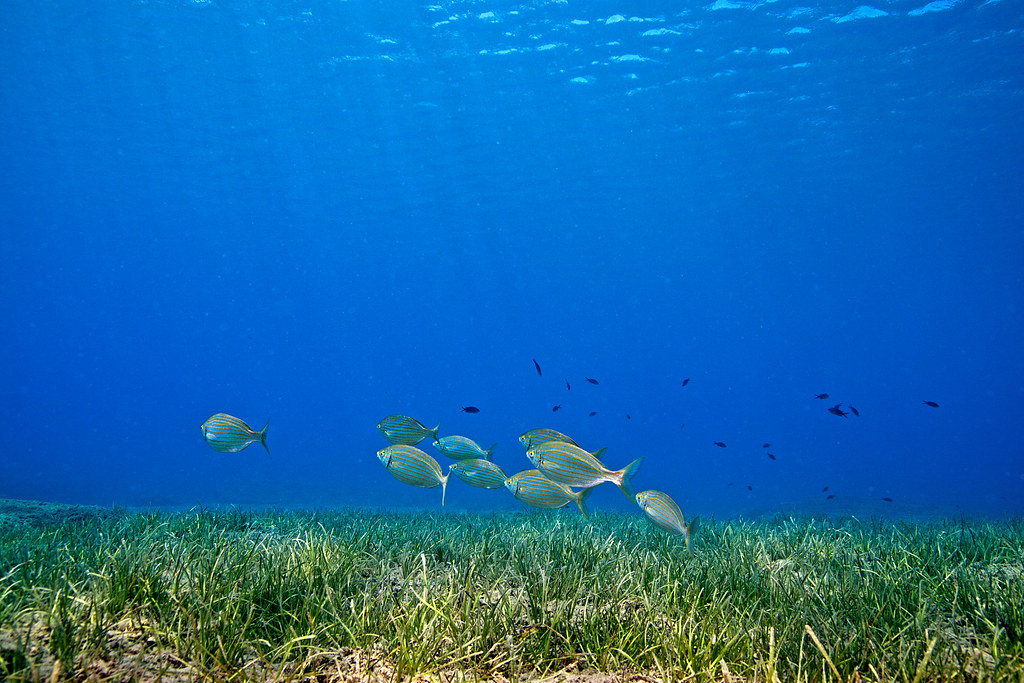
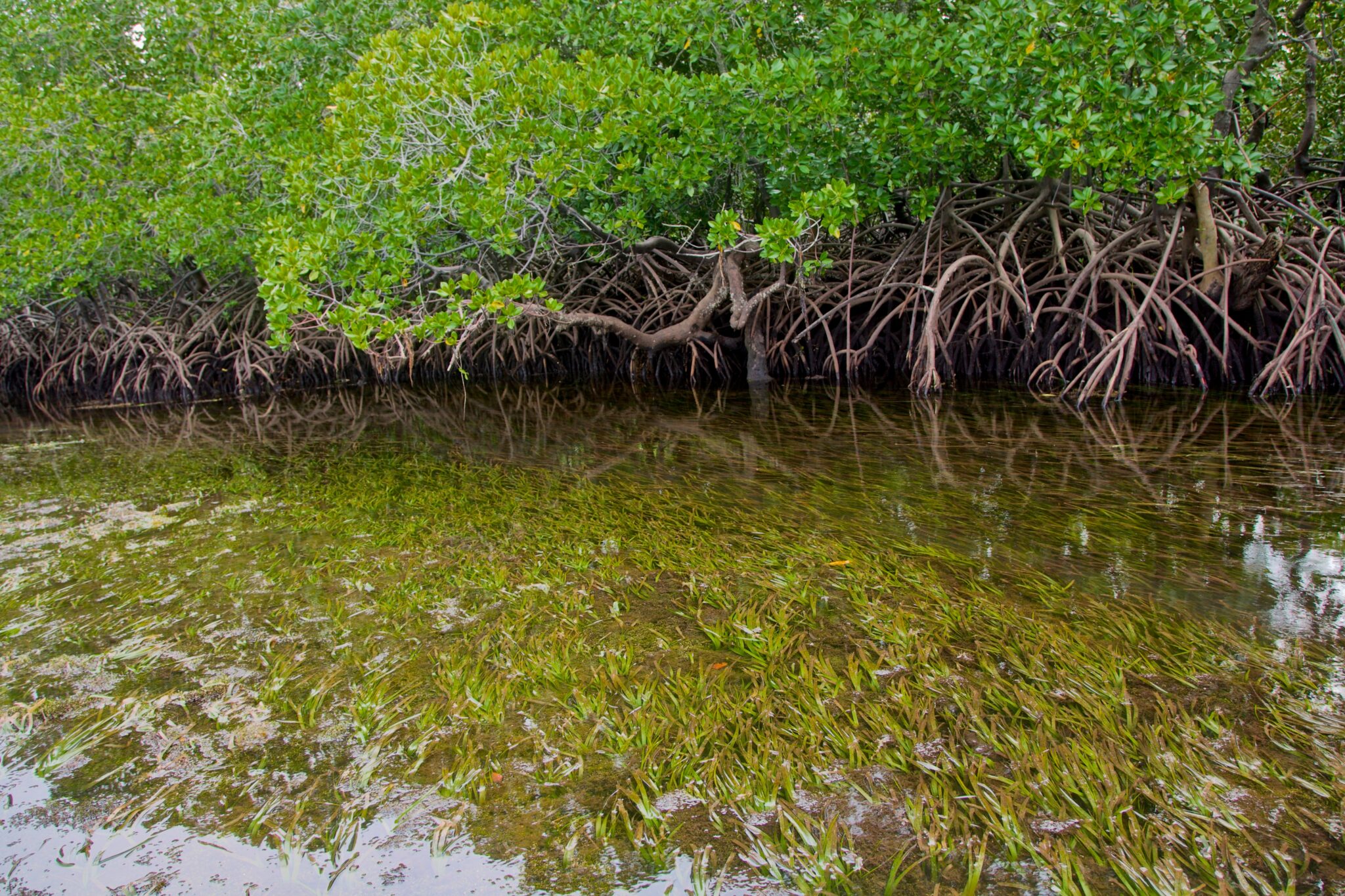
The local community and fishing activities
One of the primary drivers of regional seagrass degradation is the use of destructive fishing methods, such as seine netting. This form of fishing tears up the seagrass, exposes rhizomes, and buries the plants in sediment, so they are not able to photosynthesize. This practice is unsustainable, there is little habitat left undamaged to allow fish stocks to recover.
Furthermore, overfishing has led to an increase in sea urchin populations, which are now overgrazing on the seagrass. Seagrass needs to be protected to ensure that it continues to deliver benefits to fisheries, biodiversity, carbon sequestration and coastal protection. The community will work in collaboration with KMFRI and the Fisheries and Beach Management Units to protect this vital habitat and the fish stocks of Vanga Bay.
Biodiverse seagrass
Biodiverse environments support more complex ecosystems, which improves overall resilience. As the number of species and communities grows, there is a higher chance of any of them having the traits that enable them to adapt to a changing environment. This is especially important for seagrass ecosystems as the climate crisis is impacting ocean temperatures and causing sea level rise across the globe. Productive, healthy and biodiverse assemblages are best placed to try to adapt to changing ocean conditions.
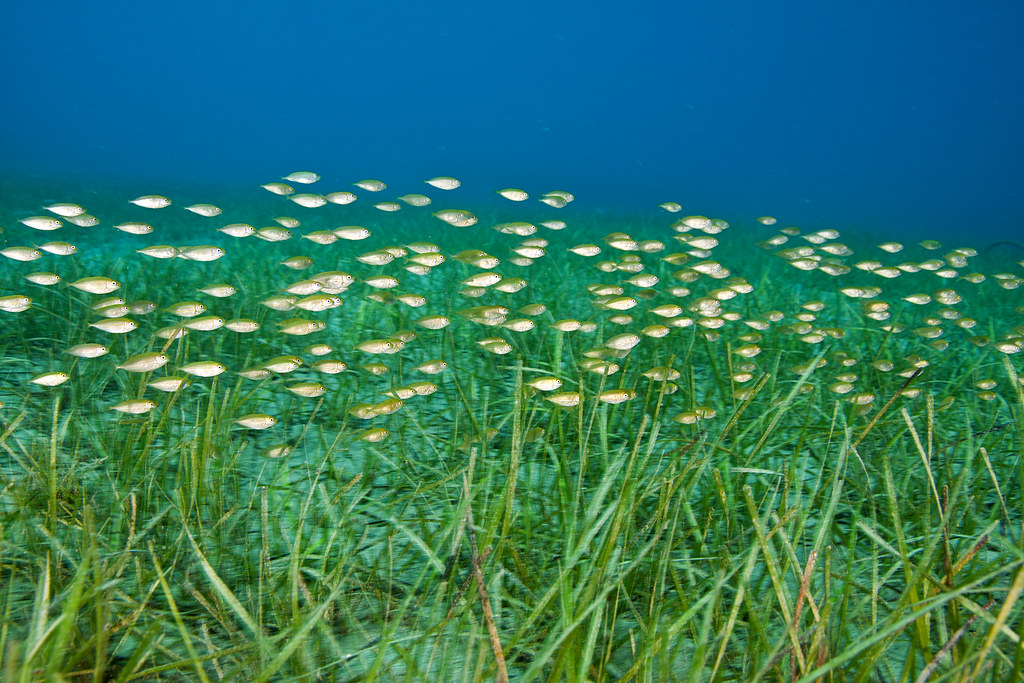
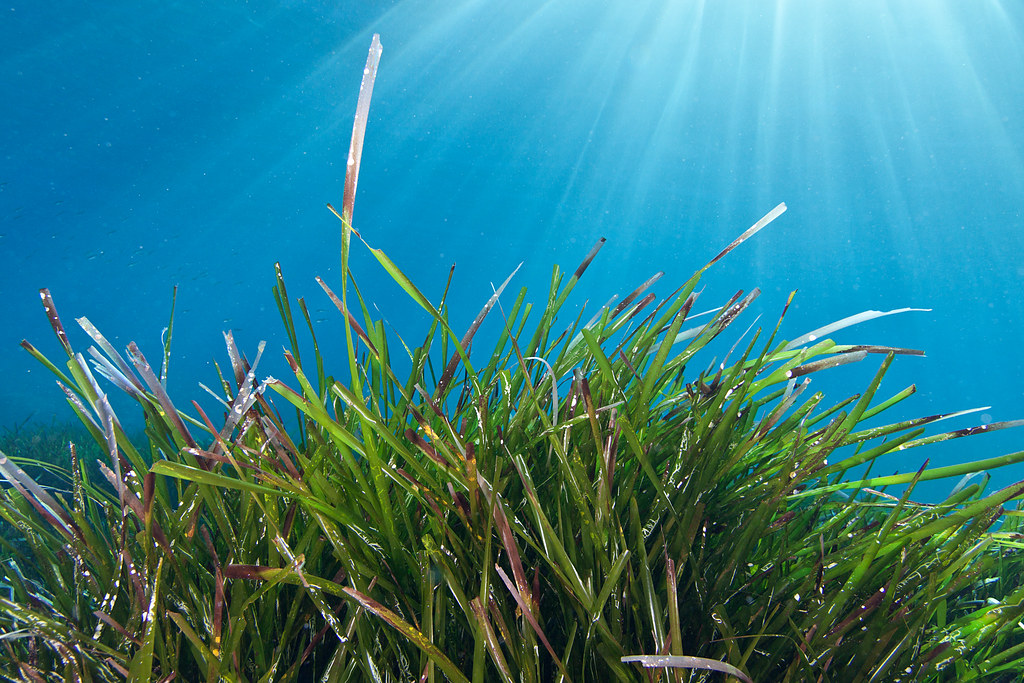
The local community and fishing activities
In addition to commercial fish stocks, other vulnerable marine animals also frequent the area such as turtles, sharks and dugong who are either residents or use the site as part of their migratory route. Some of these species are endangered or critically endangered.
Protecting key habitats is essential to the survival of threatened species. The coastal ecosystems of mangroves, seagrass and coral reefs are known to act in synergy. These three ecosystems support marine species in different life stages and can work together to offer enhanced ecosystem services. Seagrass protection will benefit both mangrove and coral reef ecosystems, helping to increase overall regional biodiversity and resilience.
Seagrass in a changing climate
Productive seagrass habitats with dense vegetation are effective at reducing coastal erosion and can slow down water turbidity and flow during storms. In our project region, Vanga Blue Forest is protecting meadows so both these projects will bring a very further enhanced local coastal and storm defence.
Although seagrass accounts for less than 0.2% of the world’s oceans, seagrass meadows store 10% of the ocean’s carbon in their sediment annually. By protecting the seagrass beds of Vanga Bay, we can improve the area’s ability to sequester carbon and to re-establish lost carbon sinks.
